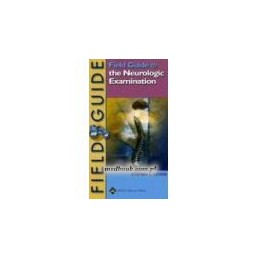- Obniżka


 Dostawa
Dostawa
Wybierz Paczkomat Inpost, Orlen Paczkę, DHL, DPD, Pocztę, email (dla ebooków). Kliknij po więcej
 Płatność
Płatność
Zapłać szybkim przelewem, kartą płatniczą lub za pobraniem. Kliknij po więcej szczegółów
 Zwroty
Zwroty
Jeżeli jesteś konsumentem możesz zwrócić towar w ciągu 14 dni*. Kliknij po więcej szczegółów
This new volume in the Field Guide Series provides a detailed review of the basic neurologic exam, giving you the tools needed to obtain valuable diagnostic information and address specific clinical presentations. The guides three sections include a brief overview of neurologic diagnosis, instructions on how to perform the basic components of the neurologic exam, and ways to tailor the exam to specific clinical situations.
Make the most of your next neurologic assessment!
Opis
SECTION I. NEUROLOGIC DIAGNOSIS: GENERAL CONSIDERATIONS
SECTION II. THE NEUROLOGIC EXAMINATION
THE NEUROLOGIC HISTORY
THE MENTAL STATUS EXAMINATION
THE CRANIAL NERVE EXAMINATION
THE MOTOR EXAMINATION
THE SENSORY EXAMINATION
THE CEREBELLAR EXAMINATION
THE REFLEX EXAMINATION
THE GAIT EXAMINATION
PUTTING IT ALL TOGETHER
SECTION III. THE NEUROLOGIC EXAMIINATION IN COMMON CLINICAL SITUATIONS
